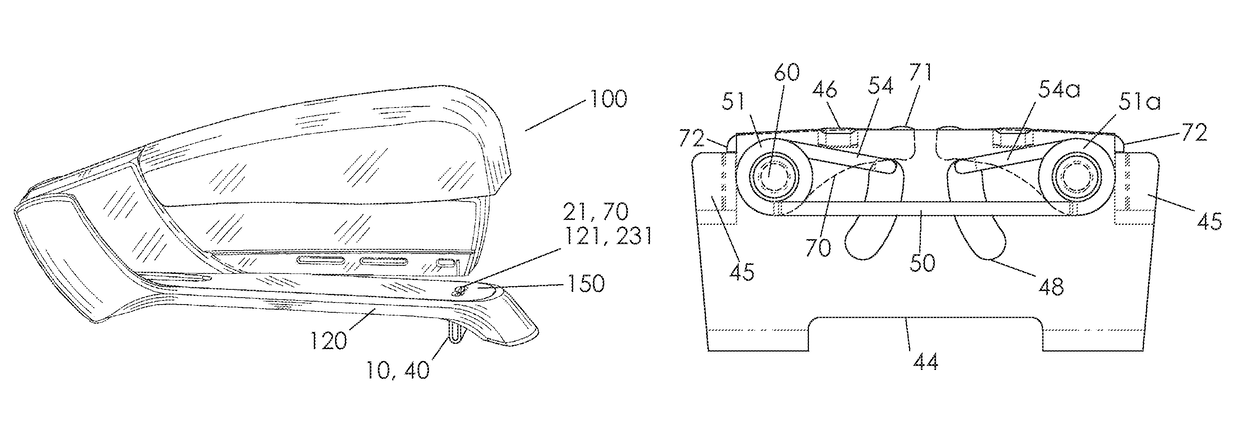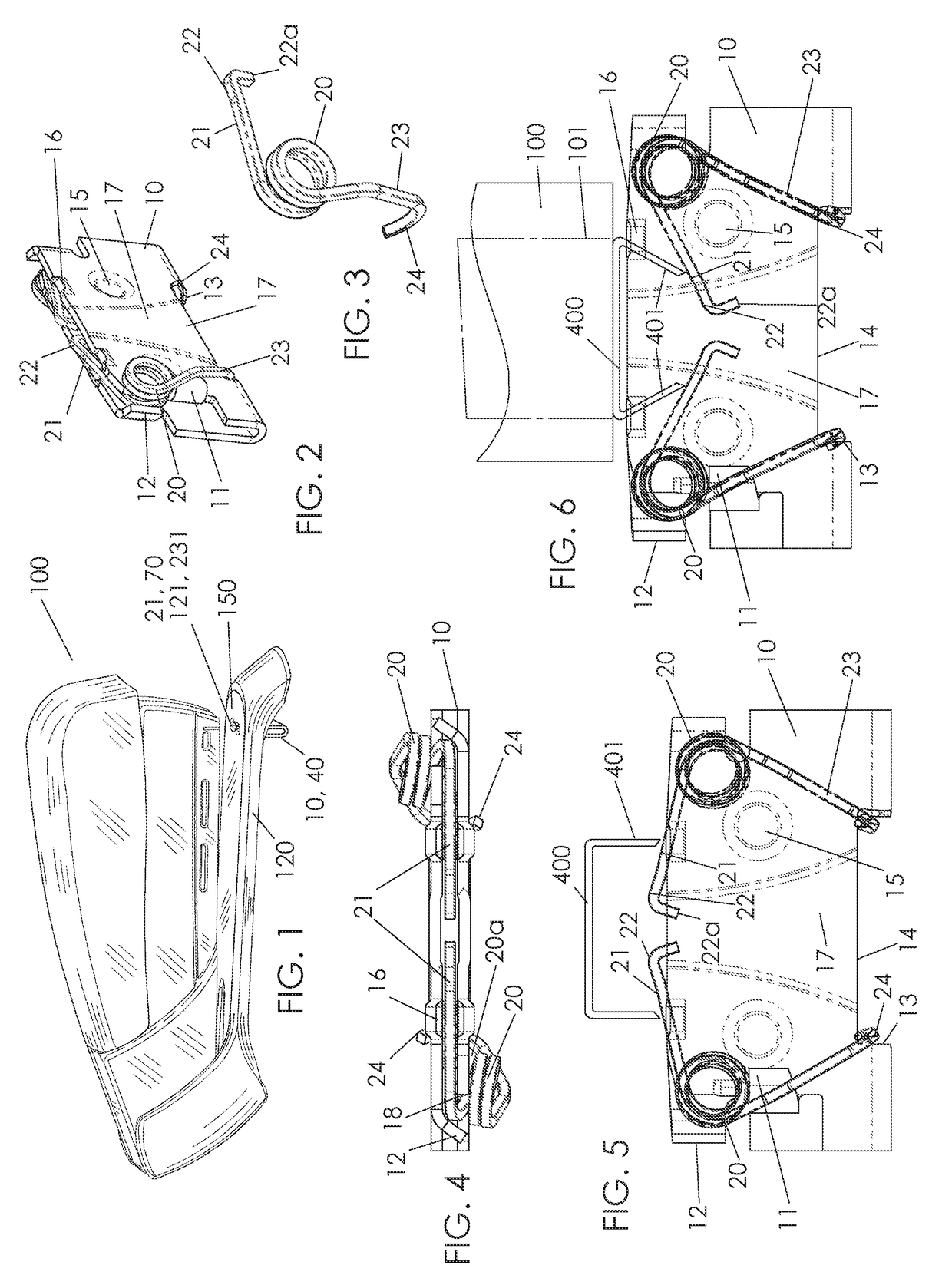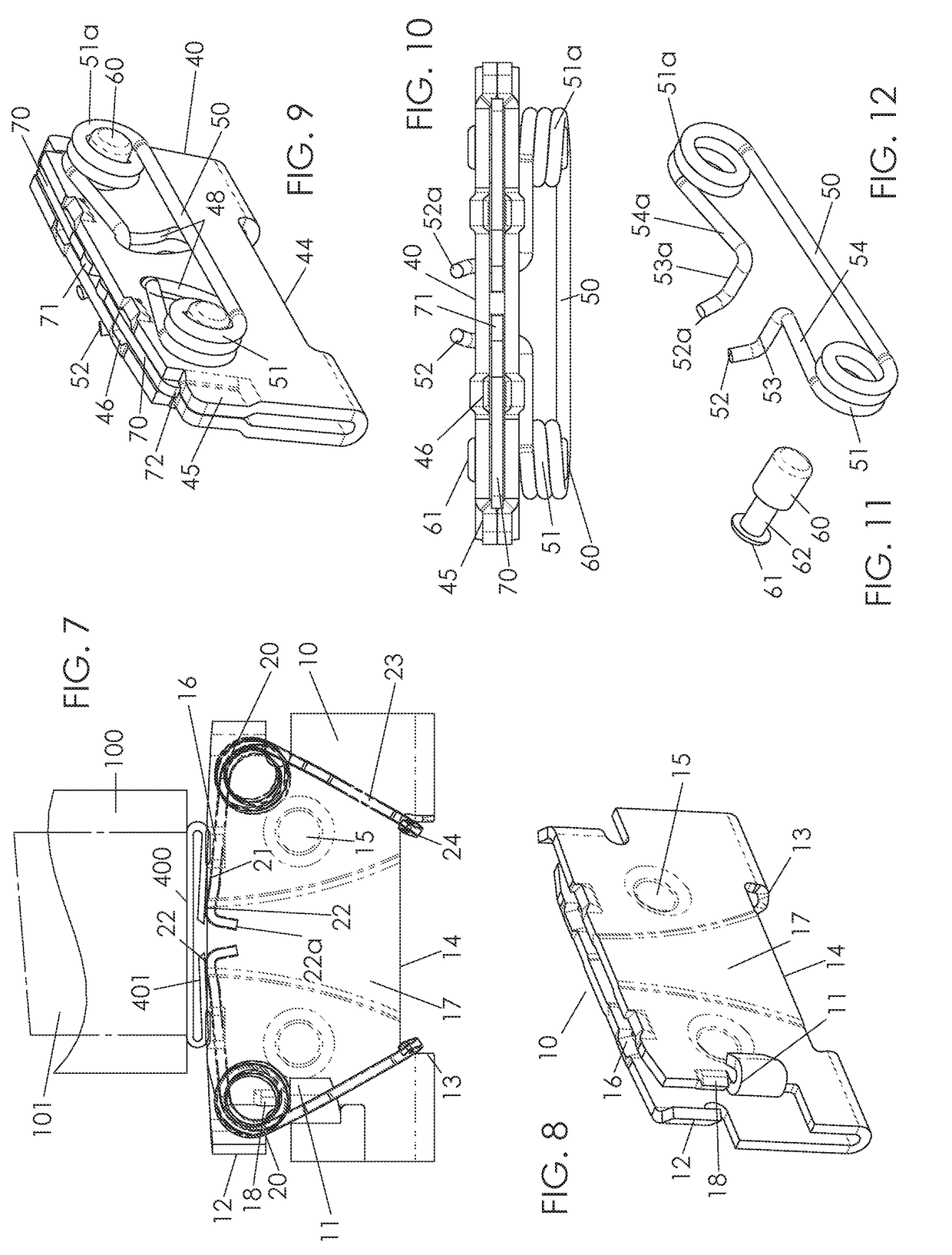Flat clinch anvil assembly
a technology of flat clinch and staple legs, which is applied in the direction of stapling tools, manufacturing tools, nailing tools, etc., can solve the problems of limited maximum thickness of paper stacks, complex linkages, and obstructing the option of opening the base, etc., to achieve convenient operation of flat clinch, high speed, and useful motion and effects
- Summary
- Abstract
- Description
- Claims
- Application Information
AI Technical Summary
Benefits of technology
Problems solved by technology
Method used
Image
Examples
Embodiment Construction
[0054]FIG. 1 shows an exemplary desktop stapler 100 including a stapler body supporting operative components with exemplary frame 10, 40 of a flat clinch anvil assembly fitted to stapler base 120. Other anvil frames and assemblies as illustrated or anticipated by the invention may be fitted to base 120 although the assemblies of FIGS. 2 to 16 are used in for simplicity in the present context of stapler 100. The stapler body is able to eject staple fasteners toward the base during an operating cycle of the stapler. During such operating cycle (not shown), a staple fed from a rack advanced on a guide track is suddenly ejected from the stapler body by impact blow. The stapler operative cycle may be of a type, for example, disclosed in U.S. Pat. No. 6,918,525 (Marks), titled “Spring Energized Desktop Stapler,” which contents are incorporated by reference. A space between the stapler underside and the base is able to receive papers or stacked sheet media to be stapled. The stapler pivots...
PUM
 Login to View More
Login to View More Abstract
Description
Claims
Application Information
 Login to View More
Login to View More - R&D
- Intellectual Property
- Life Sciences
- Materials
- Tech Scout
- Unparalleled Data Quality
- Higher Quality Content
- 60% Fewer Hallucinations
Browse by: Latest US Patents, China's latest patents, Technical Efficacy Thesaurus, Application Domain, Technology Topic, Popular Technical Reports.
© 2025 PatSnap. All rights reserved.Legal|Privacy policy|Modern Slavery Act Transparency Statement|Sitemap|About US| Contact US: help@patsnap.com



